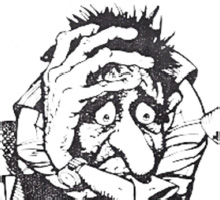
The topic of the foundations of quantum mechanics has a vast and very interesting literature and a great many papers and books have been written about the difficulties of interpreting quantum mechanics, in general, and the wavefunction, in particular. I will not make any attempt to review this literature since it stands on its own. One of the relatively most active modern periods was in the 1960s and 1970s and especially from 1973 to around 1979.
Quantum mechanics can only present the probability of a particle being found in any given region of spacetime. This raises the question of whether the position of a discrete particle can in principle only be predicted statistically by quantum mechanics or, whether the formalism of quantum mechanics applies not to a single particle, but rather to an ensemble of identical systems. The various approaches to interpreting the mathematics of quantum mechanics are motivated by somehow attempting to maintain our ideas about a classical particle in the context of the quantum world as found in nature.
This has led to great confusion not only among those approaching quantum mechanics for the first time, but also for those who have used the formalism to perform highly successful calculations for many years. In the end, it is the historical approach to the teaching of quantum mechanics that could be the root of the problem. Those brave enough to try and understand the conceptual foundations of quantum mechanics when being taught from this perspective, and often discouraged from doing so by the apocryphal advice given by many physicists to “ignore the issue and just calculate”, are generally left in a state of cognitive dissidence well expressed by the adaptation of a cartoon drawn by an anonymous artist that appeared, in a completely different context, in a government sponsored report from the mid-1980s, shown below.

A poor soul who tries to understand the foundations of quantum mechanics after being taught the subject using an historical approach.
It is hoped that this book can relieve some of the dismay, frustration, and confusion so well expressed by this cartoon.
Gerald E. Marsh